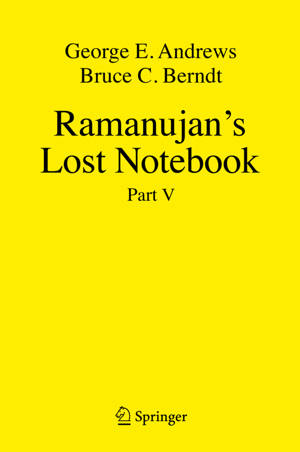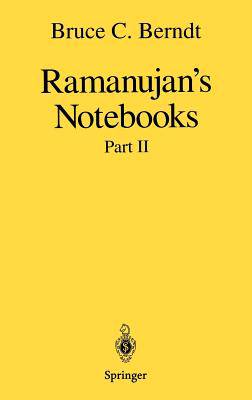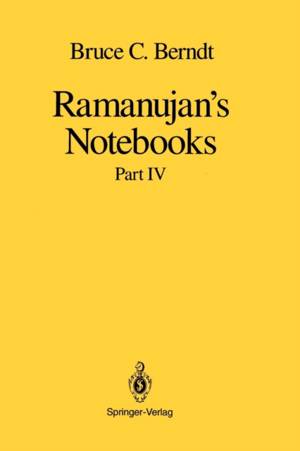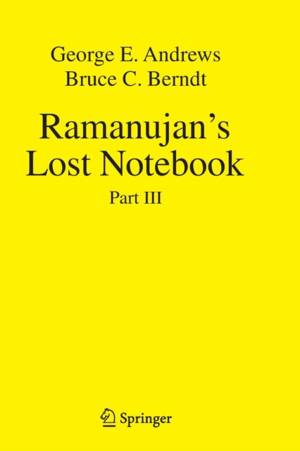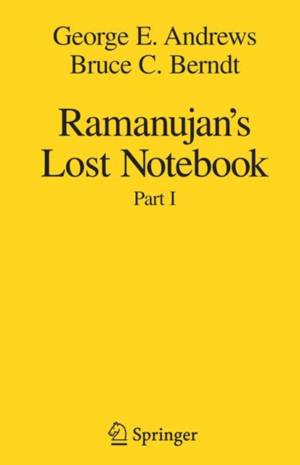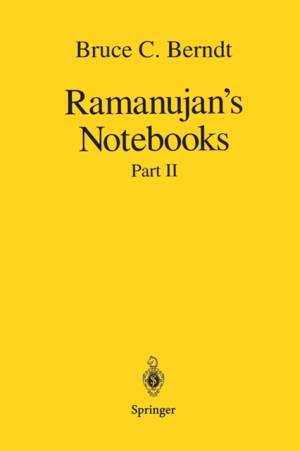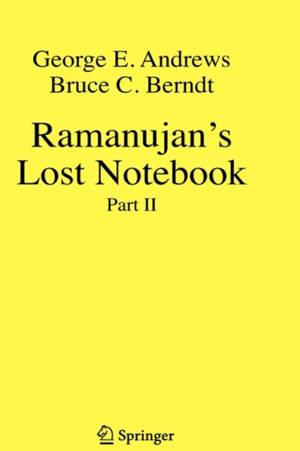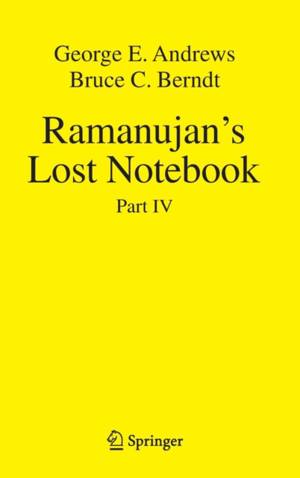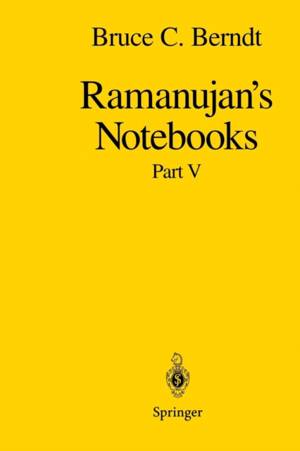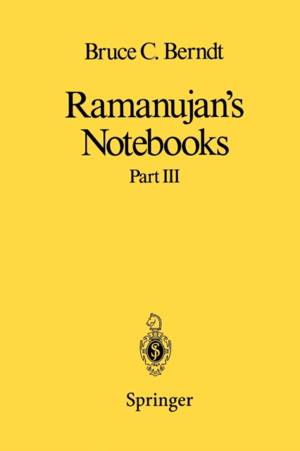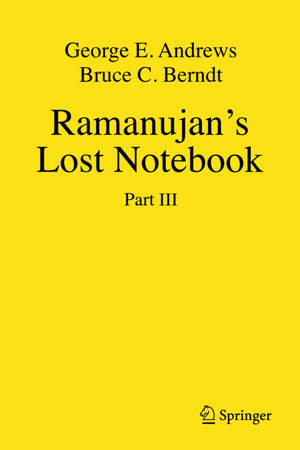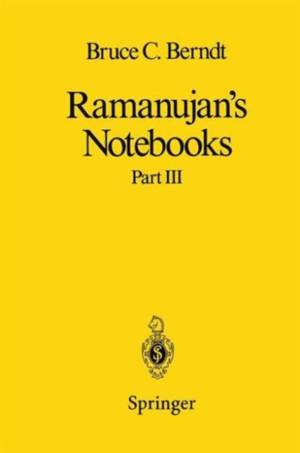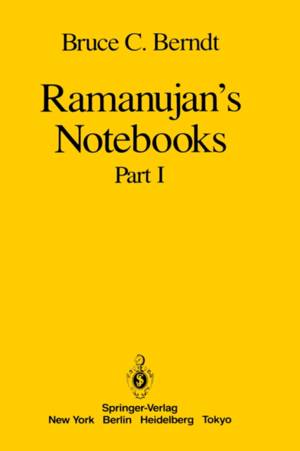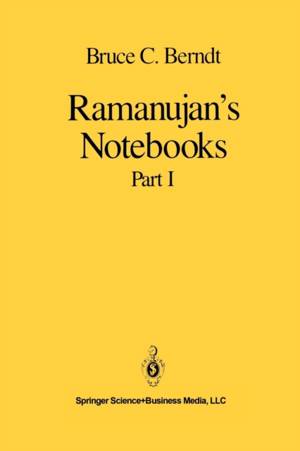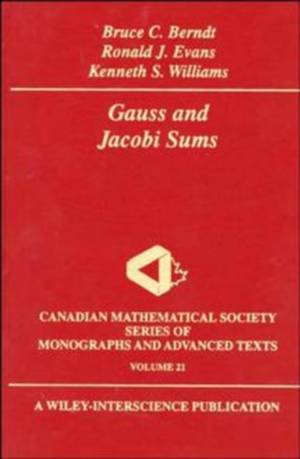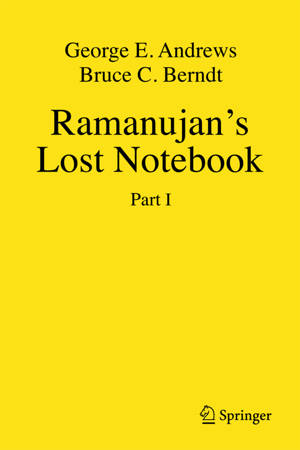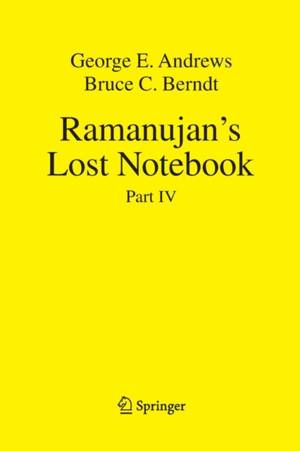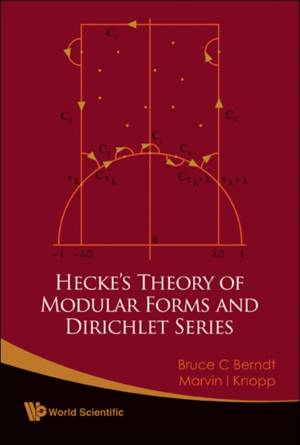
- Retrait gratuit dans votre magasin Club
- 7.000.000 titres dans notre catalogue
- Payer en toute sécurité
- Toujours un magasin près de chez vous
- Retrait gratuit dans votre magasin Club
- 7.000.0000 titres dans notre catalogue
- Payer en toute sécurité
- Toujours un magasin près de chez vous
Livres écrits par Bruce C Berndt
Tous les livres de Bruce C Berndt
-
Ramanujan's Lost Notebook
George E Andrews, Bruce C Berndt
- Livre relié | Anglais
- In the spring of 1976, George Andrews of Pennsylvania State University visited the library at Trinity College, Cambridge, to examine the papers of the... Savoir plus
147,95 €Livraison sous 1 à 4 semaines147,95 €Livraison sous 1 à 4 semaines -
Ramanujan's Notebooks
Bruce C Berndt
- Livre relié | Anglais
- During the years 1903-1914, Ramanujan recorded many of his mathematical discoveries in notebooks without providing proofs. Although many of his result... Savoir plus
181,95 €Livraison sous 1 à 4 semaines181,95 €Livraison sous 1 à 4 semaines -
Ramanujan's Lost Notebook
George E Andrews, Bruce C Berndt
- Livre broché | Anglais
- In the spring of 1976, George Andrews discovered a sheaf of 138 pages in the handwriting of Srinivasa Ramanujan. This manuscript was soon designated "... Savoir plus
97,95 €Livraison 1 à 2 semaines97,95 €Livraison 1 à 2 semaines -
Ramanujan's Notebooks
Bruce C Berndt
- Livre broché | Anglais
- During the years 1903-1914, Ramanujan worked in almost complete isolation in India. During this time, he recorded most of his mathematical discoveries... Savoir plus
167,95 €Livraison 1 à 2 semaines167,95 €Livraison 1 à 2 semaines -
Ramanujan's Lost Notebook
George E Andrews, Bruce C Berndt
- Livre broché | Anglais
- In the spring of 1976, George Andrews of Pennsylvania State University visited the library at Trinity College, Cambridge to examine the papers of the ... Savoir plus
259,45 €Livraison 2 à 3 semaines259,45 €Livraison 2 à 3 semaines -
Ramanujan's Lost Notebook
George E Andrews, Bruce C Berndt
- Livre broché | Anglais
- In the spring of 1976, George Andrews of Pennsylvania State University found "Ramanujan's lost notebook." Its discovery has frequently been deemed the... Savoir plus
104,95 €Livraison 1 à 2 semaines104,95 €Livraison 1 à 2 semaines -
Ramanujan's Notebooks
Bruce C Berndt
- Livre broché | Anglais
- During the years 1903-1914, Ramanujan recorded many of his mathematical discoveries in notebooks without providing proofs. Although many of his result... Savoir plus
274,95 €Livraison 2 à 3 semaines274,95 €Livraison 2 à 3 semaines -
Ramanujan's Lost Notebook
George E Andrews, Bruce C Berndt
- Livre broché | Anglais
- In the spring of 1976, George Andrews of Pennsylvania State University visited the library at Trinity College, Cambridge, to examine the papers of the... Savoir plus
147,95 €Livraison sous 1 à 4 semaines147,95 €Livraison sous 1 à 4 semaines -
Ramanujan's Lost Notebook
George E Andrews, Bruce C Berndt
- Livre relié | Anglais
- In the spring of 1976, George Andrews discovered a sheaf of 138 pages in the handwriting of Srinivasa Ramanujan. This manuscript was soon designated "... Savoir plus
125,95 €Livraison 1 à 2 semaines125,95 €Livraison 1 à 2 semaines -
Ramanujan's Notebooks
Bruce C Berndt
- Livre relié | Anglais | Ramanujan's Notebooks
- During the years 1903-1914, Ramanujan worked in almost complete isolation in India. During this time, he recorded most of his mathematical discoveries... Savoir plus
167,95 €Livraison 1 à 2 semaines167,95 €Livraison 1 à 2 semaines -
Ramanujan's Lost Notebook
George E Andrews, Bruce C Berndt
- Livre relié | Anglais
- In the spring of 1976, George Andrews of Pennsylvania State University visited the library at Trinity College, Cambridge, to examine the papers of... Savoir plus
259,45 €Livraison 2 à 3 semaines259,45 €Livraison 2 à 3 semaines -
Ramanujan's Notebooks
Bruce C Berndt
- Livre broché | Anglais
- This book constitutes the fifth and final volume to establish all the results claimed by the great Indian mathematician Srinivasa Ramanujan in his "No... Savoir plus
279,45 €Livraison 1 à 2 semaines279,45 €Livraison 1 à 2 semaines -
Ramanujan's Notebooks
Bruce C Berndt
- Livre broché | Anglais
- During the years 1903-1914, Ramanujan recorded most of his mathematical discoveries without proofs in notebooks. This book is the third of five volume... Savoir plus
427,45 €Livraison 2 à 3 semaines427,45 €Livraison 2 à 3 semaines -
Ramanujan's Lost Notebook
George E Andrews, Bruce C Berndt
- Livre relié | Anglais
- In the spring of 1976, George Andrews of Pennsylvania State University visited the library at Trinity College, Cambridge to examine the papers of the ... Savoir plus
153,95 €Livraison 1 à 2 semaines153,95 €Livraison 1 à 2 semaines -
Ramanujan's Notebooks
Bruce C Berndt
- Livre relié | Anglais
- During the years 1903-1914, Ramanujan recorded most of his mathematical discoveries without proofs in notebooks. This book is the third of five volume... Savoir plus
427,45 €Livraison 2 à 3 semaines427,45 €Livraison 2 à 3 semaines -
Ramanujan's Notebooks
Bruce C Berndt
- Livre relié | Anglais
- Srinivasa Ramanujan is, arguably, the greatest mathematician that India has produced. His story is quite unusual: although he had no formal education ... Savoir plus
335,95 €Livraison 2 à 3 semaines335,95 €Livraison 2 à 3 semaines -
Ramanujan's Notebooks
Bruce C Berndt
- Livre relié | Anglais
- This book constitutes the fifth and final volume to establish all the results claimed by the great Indian mathematician Srinivasa Ramanujan in his "No... Savoir plus
279,45 €Livraison 1 à 2 semaines279,45 €Livraison 1 à 2 semaines -
Ramanujan's Notebooks
Bruce C Berndt
- Livre broché | Anglais
- Srinivasa Ramanujan is, arguably, the greatest mathematician that India has produced. His story is quite unusual: although he had no formal education ... Savoir plus
335,95 €Livraison 2 à 3 semaines335,95 €Livraison 2 à 3 semaines -
Gauss and Jacobi Sums
Bruce C Berndt, Ronald J Evans, Kenneth S Williams
- Livre relié | Anglais | -Interscience and Canadian Mathematics Monographs and Texts | n° 20
- Devised in the 19th century, Gauss and Jacobi Sums are classical formulas that form the basis for contemporary research in many of today's sciences. T... Savoir plus
311,95 €Livraison 2 à 3 semaines311,95 €Livraison 2 à 3 semaines -
Ramanujan's Lost Notebook
George E Andrews, Bruce C Berndt
- Livre relié | Anglais
- In the spring of 1976, George Andrews of Pennsylvania State University found "Ramanujan's lost notebook." Its discovery has frequently been deemed the... Savoir plus
139,95 €Livraison 1 à 2 semaines139,95 €Livraison 1 à 2 semaines -
Ramanujan's Lost Notebook
George E Andrews, Bruce C Berndt
- Livre broché | Anglais
- In the spring of 1976, George Andrews of Pennsylvania State University visited the library at Trinity College, Cambridge, to examine the papers of... Savoir plus
104,95 €Livraison 1 à 2 semaines104,95 €Livraison 1 à 2 semaines -
Hecke's Theory of Modular Forms and Dirichlet Series (2nd Printing and Revisions)
Bruce C Berndt, Marvin I Knopp
- Livre relié | Anglais | Monographs in Number Theory | n° 5
- In 1938, at the Institute for Advanced Study, E Hecke gave a series of lectures on his theory of correspondence between modular forms and Dirichlet se... Savoir plus
111,95 €Date de disponibilité inconnue111,95 €Date de disponibilité inconnue
22 sur 22 résultat(s) affiché(s)





